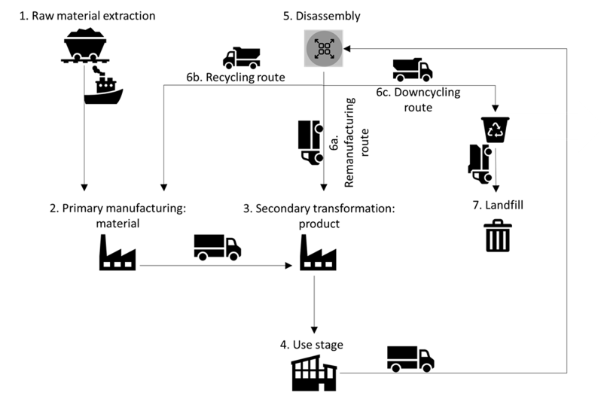Remanucycling

Abstract
Remanucycling is the process of disassembling a product at its end-of-life into its constituent parts and materials with the purpose of maximizing their reclamation potential. The components which are still in good working conditions can be used as constituent for remanufacturing new products, those that cannot be used for remanufacturing can then be recycled and eventually downcycled, whilst the landfill path is to be banned. For remanucycling to occur products must be disassemblable and the resulting components fit for the purpose. This applies to the most widespread architectural glass product: the insulating glass unit, whereby the glass panes could be reused or recycled. Recently, an industrial machine capable of disassembling insulating glass units was developed. This innovation represents a crucial step for implementing circularity of transparent façades, but it is not the only step required for remanucycling to occur. Selective deconstruction must replace demolition, the material flow is to be diverted from landfill towards disassembly plants, from where additional new logistic routes are to be established. The glass transport will have to shift from a predominantly stock-size model to a cut-size model. Selective deconstruction and cut-size transport are more work-intensive than demolition and stock-size transport, respectively. This hints that one of the challenges for remanucycling to occur is to develop extremely effective practices that can keep the costs of operation below a break-even threshold. In order to reuse glass components, specific quality protocols are to be proposed, established, validated and eventually standardized. These protocol are to be specific by glass type. The environmental footprint of remanucycling is yet to be assessed, but its benefit mainly comes from scaling-up. This study introduces the concept of remanucycling and applies it specifically to the architectural flat glass industry. The transformation needed, along with the challenges and opportunities arising from this transformation are described. The purpose is to provide a holistic view of how the glass industry might shift towards a circular economy so that the changes needed can be identified and coordinated at industry and scientific level.
Published
Issue
Section
Circularity & Sustainable Solutions
License
Copyright (c) 2024 Marco Zaccaria, Miriam Schuster, Jagoda Cupać, Bert Van Lancker, Christian Louter, Jan Belis

This work is licensed under a Creative Commons Attribution 4.0 International License.



